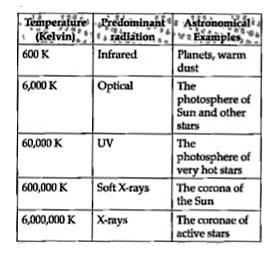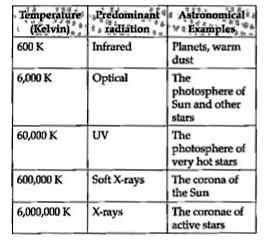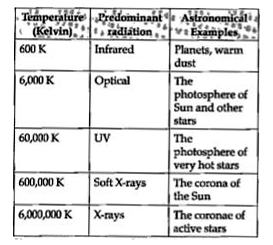What were the distinctive features of the Mughal nobility? How was their relationship with the emperor shaped? Identify the elements that went into the making of the Mughal ideal of kingship.
recruitment, rank of the nobility and relationship with the emperor:
(i) Mughal chronicles, especially the Akbar Nama, have bequeathed a vision of empire in which agency rests almost solely with the emperor, while the rest of the kingdom has been portrayed as following his orders.
(ii) If we look more closely at the available information the histories provide us about the apparatus of the Mughal state, we may be able to understand the ways in which the imperial organisation was dependent on several different institutions.
(iii) The most important pillar of the Mughal state was the nobility. The nobility was recruited from diverse ethnic and religious group which ensured that no faction was large enough to challenge the authority of the state.
(iv) The officer corps of the Mughals was described as a bouquet of flowers (guldasta) held together by loyalty to the emperor. In Akbar.s imperial service, Turani and Iranian nobles were present from the earliest phase of carving out a political dominion. Many had accompanied Humayun, others migrated later to the Mughal court.
(v) The holders of government offices was given the ranks (mansabs) comprising two numerical designations: zat which was an indicator of position in the imperial hierarchy and the salary of the official (mansabdar), and sawar which indicated the number of horsemen he was required to maintain in service.
(vi) Akbar, who designed the mansab system, also established spiritual relationships with a select band of his nobility by treating them as his disciples (murid).
(vii)For members of the nobility, imperial service was a way of acquiring power, wealth and the highest possible reputation. A person wishing to join the service petitioned through a noble, who presented a tajwiz to the emperor.
(viii)If the applicant was found suitable, a mansab was granted to him. The mir bakhshi (paymaster general) stood in open court on the right of the emperor and presented all candidates for appointment or promotion, while his office prepared orders bearing his seal and signature as well as those of the emperor.
(ix) There were two other important ministers at the centre: the diwan-i ala (finance minister) and sadr-us sudur (minister of grants or madad-i maash, and in charge of appointing local judges or qazis)
(x) The three ministers occasionally came together as an advisory body, but were independent of each other. Akbar with these and other advisers shaped the administrative, fiscal and monetary institutions of the empire. Nobles stationed at the court (tainat-i rakab) were a reserve force to be deputed to a province or military campaign.
(xi) Nobles were duty-bound to appear twice a day to express their submission to the emperor. They also had to share the responsibility for guarding the emperor and his household round the clock.
Topper's Solved these Questions
- KINGS AND CHRONICLES THE MUGHAL COURTS BOOK - FULL MARKSCHAPTER - KINGS AND CHRONICLES THE MUGHAL COURTS EXERCISE - ADDITIONAL QUESTIONS SOLVED (Very Short Answer Type Questions)
32 Videos
- KINGS AND CHRONICLES THE MUGHAL COURTS BOOK - FULL MARKSCHAPTER - KINGS AND CHRONICLES THE MUGHAL COURTS EXERCISE - ADDITIONAL QUESTIONS SOLVED (Short Answer Type Questions )
11 Videos
- FRAMING THE CONSTITUTION THE BEGINNING OF A NEW ERABOOK - FULL MARKSCHAPTER - FRAMING THE CONSTITUTION THE BEGINNING OF A NEW ERAEXERCISE - PREVIOUS YEARS BOARD QUESTIONS SOLVED
14 Videos
- KINGS, FARMERS AND TOWNSBOOK - FULL MARKSCHAPTER - KINGS, FARMERS AND TOWNSEXERCISE - ADDITIONAL QUESTIONS SOLVED (Project Work)
12 Videos
Similar Questions
Knowledge Check
Read the following text and answer the following questions on the basis of the same:
Spectrum Analysis and Astronomy
Each element in the periodic table can appear in gaseous form and produce its own spectrum unique to that element. Hydrogen will not look like Helium, which wil not look like carbon which will not look like iron....and soon. Astrophysists can identify what kinds of materials are present in stars from the analysis of star's spectra. This type of study is called astronomical spectroscopy. The science of spectroscopy is quite sophisticated. From spectrum lines analysis astrophysists can determine not only the element, but the temperature and density of that element in the star. The spectral line also can tell us about any magnetic field of the star. The width of the line can tell us how fast the material is moving. We can learn about winds in stars from this. The shifting of spectral liens shift back and forth indicates that the star may be orbiting another star. The following table shows a rough guide for the relationship between the temperature of a star and the electromagnetic spectrum.

If the spectrum of a star is red or blue shifted, then it can be used to infer its velocity along the line of sight. Edwin Hubble observed that more distant galaxies tended to have more red shifted spectra. This establishes the theory of expansion of the universe.
What may be the approximate temperature if soft X-rays are found predominantly in the spectrum?A60000CB600000CC60000KD600000KRead the following text and answer the following questions on the basis of the same:
Spectrum Analysis and Astronomy
Each element in the periodic table can appear in gaseous form and produce its own spectrum unique to that element. Hydrogen will not look like Helium, which will not look like carbon which will not look like iron....and soon. Astrophysists can identify what kinds of materials are present in stars from the analysis of star's spectra. This type of study is called astronomical spectroscopy. The science of spectroscopy is quite sophisticated. From spectrum lines analysis astrophysists can determine not only the element, but the temperature and density of that element in the star. The spectral line also can tell us about any magnetic field of the star. The width of the line can tell us how fast the material is moving. We can learn about winds in stars from this. The shifting of spectral liens shift back and forth indicates that the star may be orbiting another star. The following table shows a rough guide for the relationship between the temperature of a star and the electromagnetic spectrum.

If the spectrum of a star is red or blue shifted, then it can be used to infer its velocity along the line of sight. Edwin Hubble observed that more distant galaxies tended to have more red shifted spectra. This establishes the theory of expansion of the universe.
What is astronomical spectroscopy?AStudy of spectrum of star light and to identify its distance from Earth.BStudy spectrum of star light and to identify what kinds of elements are present in starsCBoth A and BDNone of the aboveRead the following text and answer the following questions on the basis of the same:
Spectrum Analysis and Astronomy
Each element in the periodic table can appear in gaseous form and produce its own spectrum unique to that element. Hydrogen will not look like Helium, which wil not look like carbon which will not look like iron....and soon. Astrophysists can identify what kinds of materials are present in stars from the analysis of star's spectra. This type of study is called astronomical spectroscopy. The science of spectroscopy is quite sophisticated. From spectrum lines analysis astrophysists can determine not only the element, but the temperature and density of that element in the star. The spectral line also can tell us about any magnetic field of the star. The width of the line can tell us how fast the material is moving. We can learn about winds in stars from this. The shifting of spectral liens shift back and forth indicates that the star may be orbiting another star. The following table shows a rough guide for the relationship between the temperature of a star and the electromagnetic spectrum.

If the spectrum of a star is red or blue shifted, then it can be used to infer its velocity along the line of sight. Edwin Hubble observed that more distant galaxies tended to have more red shifted spectra. This establishes the theory of expansion of the universe.
From the spectrum analysis the following information of a star can be obtainedAElements present, temperatureBMagnetic field, density, massCdistance of the starDBoth A and B
What were the concerns that shaped Mughal Polices and attitudes towards regions outside the subcontinent?
View SolutionThe late Roman bureaucracy, both the higher and middle echelons, was a comparatively affluent group because it drew the bulk of its salary in gold and invested much of this in buying up assets like land. There was of course also a great deal of corruption, especially in the judicial system and in the administration of military supplies. The extortion of the higher bureaucracy and the greed of the provincial governors were proverbial. But government intervened repeatedly to curb these forms of corruption – we only know about them in the first place because of the laws that tried to put an end to them, and because historians and other members of the intelligentsia denounced such practices. This element of 'criticism' is a remarkable feature of the classical world. The Roman state was an authoritarian regime, in other words, dissent was rarely tolerated and government usually responded to protest with violence (especially in the cities of the East where people were often fearless in making fun of emperors). Yet a strong tradition of Roman law had emerged by the fourth century, and this acted as a trake on even the most fearsome emperors. Emperors were not free to do whatever they liked, and the law was actively used to protect civil rights. That is why in the later fourth century it was possible for powerful bishops like Ambrose to confront equally powerful emperors when they were excessively harsh or repressive in their handling of the civilian population.
What was the role of the Roman government in handling corruption that was widespread among the higher bureaucracy and provincial governors?
View SolutionThe late Roman bureaucracy, both the higher and middle echelons, was a comparatively affluent group because it drew the bulk of its salary in gold and invested much of this in buying up assets like land. There was of course also a great deal of corruption, especially in the judicial system and in the administration of military supplies. The extortion of the higher bureaucracy and the greed of the provincial governors were proverbial. But government intervened repeatedly to curb these forms of corruption – we only know about them in the first place because of the laws that tried to put an end to them, and because historians and other members of the intelligentsia denounced such practices. This element of 'criticism' is a remarkable feature of the classical world. The Roman state was an authoritarian regime, in other words, dissent was rarely tolerated and government usually responded to protest with violence (especially in the cities of the East where people were often fearless in making fun of emperors). Yet a strong tradition of Roman law had emerged by the fourth century, and this acted as a trake on even the most fearsome emperors. Emperors were not free to do whatever they liked, and the law was actively used to protect civil rights. That is why in the later fourth century it was possible for powerful bishops like Ambrose to confront equally powerful emperors when they were excessively harsh or repressive in their handling of the civilian population.
What do you know about law system of the Roman Empire?
View SolutionRead the following text and answer the following questions on the basis of the same:
Spectrum Analysis and Astronomy
Each element in the periodic table can appear in gaseous form and produce its own spectrum unique to that element. Hydrogen will not look like Helium, which will not look like carbon which will not look like iron....and soon. Astrophysists can identify what kinds of materials are present in stars from the analysis of star's spectra. This type of study is called astronomical spectroscopy. The science of spectroscopy is quite sophisticated. From spectrum lines analysis astrophysists can determine not only the element, but the temperature and density of that element in the star. The spectral line also can tell us about any magnetic field of the star. The width of the line can tell us how fast the material is moving. We can learn about winds in stars from this. The shifting of spectral liens shift back and forth indicates that the star may be orbiting another star. The following table shows a rough guide for the relationship between the temperature of a star and the electromagnetic spectrum.

If the spectrum of a star is red or blue shifted, then it can be used to infer its velocity along the line of sight. Edwin Hubble observed that more distant galaxies tended to have more red shifted spectra. This establishes the theory of expansion of the universe.
Which nature of spectrum establishes the theory of the expanding universe?
View SolutionRead the following text and answer the following questions on the basis of the same:
Spectrum Analysis and Astronomy
Each element in the periodic table can appear in gaseous form and produce its own spectrum unique to that element. Hydrogen will not look like Helium, which will not look like carbon which will not look like iron....and soon. Astrophysists can identify what kinds of materials are present in stars from the analysis of star's spectra. This type of study is called astronomical spectroscopy. The science of spectroscopy is quite sophisticated. From spectrum lines analysis astrophysists can determine not only the element, but the temperature and density of that element in the star. The spectral line also can tell us about any magnetic field of the star. The width of the line can tell us how fast the material is moving. We can learn about winds in stars from this. The shifting of spectral liens shift back and forth indicates that the star may be orbiting another star. The following table shows a rough guide for the relationship between the temperature of a star and the electromagnetic spectrum.

If the spectrum of a star is red or blue shifted, then it can be used to infer its velocity along the line of sight. Edwin Hubble observed that more distant galaxies tended to have more red shifted spectra. This establishes the theory of expansion of the universe.
The lines in a star's spectrum is found to shift back and forth. What conclusion may be drawn from this observation?
View Solution
